
Egon Schiele
“Processes near and far in space and time all unfold in the same direction. All animals, us humans included, get older in the same direction. We never meet anyone getting younger.”
Julian Barbour (The Janus Point)
“Could there be a more uncomfortable position intellectually than that of floating in the thin air of unproved possibilities, not knowing whether what one sees is truth or illusion? This is the dream-like atmosphere of the I Ching.”
Carl Jung (Introduction to The I Ching or Book of Changes)
“To say “it exists” is to reify.
To say “it does not exist” is to adopt the view of nihilism.
Therefore a wise person
Does not subscribe to “it exists” or “it does not exist”.
Nāgārjuna (Jay F. Garfield Ocean of Reasoning. A Great Commentary on Nāgārjuna’s Mūlamadhyamakakārikā)
The older one gets the more one thinks about death. There is something very unsatisfactory about our narratives of death. Death feels anathema to narrative. I was reading a lot of the Old Testament this last month (see previous blog post) and I came across R. Crumb’s illustration of the Book of Genesis. It is quite a remarkable bit of artwork, but I also began to think, at the same time, about many of my recent dreams. The themes of these dreams are varied but the aesthetic of my dreams is very particular. The atmosphere in my dream world is very particular. The photograph I use below by Peter Bialobrzeski captures something of my private dream landscape. I cannot begin to explain how, or even why it does this, but it does. It is indelible and haunting because I know this place from my dreams. And this got me thinking about consciousness and science and religion, too, in terms of death. And there is an inevitable path one follows here to ideas of origin and the Universe. Nothing is quite so unsatisfactory as contemporary science and its ‘explanation’ of cosmological questions.
Now there is a too much here so I want to try to start with, in a personal sense (and I realize I am not, in general, a very personal writer, in the conventional sense) what nags at me the most. And one central question is how can death interrupt narrative– our narratives, our life stories, the stories of those we know and love (or hate). All of these emotions, this experience, subjectivity, whatever that is (and thats sort of the point of this post) and then within an instant, just oblivion. It feels wrong somehow. It actually feels impossible.

Tantric Hindu painting, 17th century. Artist unknown.
“Social validation is often crucial to our ability to truly hold onto a belief system, both consciously and ‘subcon-sciously.’ And no form of social validation is stronger than the validation provided by the segment of society that has become perceived as the learned elite.”
Bernardo Kastrup (Why Materialism is Baloney)
One of the problems with quantum theory is, as an example, the super position idea. Or the collapsing wave function idea. What is the ontological evidence for this? Well, there is none. It can be inferred. Roger Penrose (Sir Roger) thinks if there is an empty planet somewhere in space, without any life, certain things can still happen on it. Including the collapsing wave function. That this is a ‘fact’ an objective reality, begging questions about observer. Which is very logical but presupposes the reality of this planet, in a material sense. And even then it becomes the old tree falling in the forest idea. Or, as some would say, the wave function ‘produces’ consciousness.This is the core of quantum physics in a sense. Or ideas like retro-causality. Interestingly what quantum physics can do is really even less than classical physics, at its most theoretical, can do. It does not traffic in explanation, certainly. It deals with numbers. It arrives at numerical results. Which are other numbers. Nearly all physicists will admit they cannot visualize the things these numbers represent.
And as an example super position is quite sort of foundational as quantum physics goes. And I remain convinced that the sense of ‘weirdness’ that everyone refers to when discussing quantum anything is a product of language. When I say what quantum physics can ‘do’…..we need to stop……what does ‘do’ mean? These sorts of questions are in fact asked. I saw an interview with Tim Maudlin, a noted physicist, and he was pointing out exactly this. We have not only imperfect ‘descriptive’ language, we have built into the grammar of all languages certain biases about materiality. But it is more elusive than this even. Language is how we conscious beings (sic) create these discussions. Now quantum physics is mostly numbers. But not entirely.

Peter Bialobrzeski, photography
“The actual laws of nature are very interesting, but it’s also interesting that there are laws at all. The laws we’ve discovered to date take the form of precise and elegant mathematical statements. The physicist Eugene Wigner was so moved by this feature of reality that he spoke of “the unreasonable effectiveness of mathematics in physics.” Our universe isn’t simply a hodgepodge of stuff doing random things; it’s a highly orderly and predictable evolution of fixed constituents of matter, an intricately choreographed dance of particles and forces. When physicists speak metaphorically of God, they are simply giving in to the natural human tendency to anthropomorphize the physical world—to give it a human face. “God’s thoughts” are code for “the underlying laws of nature.” ”
Sean Carroll (The Particle at the End of the Universe)
Now there are endless books for the lay readers of science, on all topics related to quantum mechanics and quantum theory, and on particle physics and increasingly on AI. I am not a mathematician so I will not be delving into the technical problems of this topic. But I am interested in the ‘story’ of quantum theory. Not the history per se, but the story. Now Jim Al-Khalili was part of a pretty decent TV series on the historical foundations of quantum theory (for obviously a lay audience) . And as good as I thought it was in some respects, it was also very frustrating. Frustrating because there was (and this is true of most popular science books that deal with physics or quantum theory) a lack of perspective on the deeper implications of everything that has happened since Einstein and general relativity. But Al-Khalili did make one observation that was quite tantalizing and no doubt more profound than he realized. And that was how the social revolution of the sixties ushered in a fascination with the ‘weird’ (sort of stoned or hallucinatory) aspects of quantum theory. Or it created a science that it needed. For there are aspects of quantum theory that feel like science as if it were developed by the Id. And by extension there were a couple of books that one saw in everyone’s back pocket back then (of their jeans usually) and that was The Tao of Physics by Fritjof Capra and The Dancing Wu Li Masters by Gary Zukav. And what is interesting is the way quantum theory began to be synthesised, in a sense. Socially synthesised. By which I mean Western society was looking to find explanations for a new kind of science that cannot really provide explanations (and again, maybe that was the point). Now I have written quite a bit about the contemporary cult of scientism , and about the illusions of a highly marketed AI industry and all the post internet technology that has begun to take over our lives. And the seeming inherent authoritarianism of technology altogether. Now both of the books I just mentioned were published in the seventies (the Zukav in 1979 in fact). Thats a decade after the Summer of Love.
In the Al-Khalili series the second half of the show tried to find the ‘practical’ uses of quantum theory. One was the discovery of how birds navigate their sometimes very long migrations. Only it didn’t really quite do that, though it was interesting. The real meaning of quantum theory is not in the practical (or profitable). And as a side bar there is the not insignificant issue of cost for studying any sub atomic particle. The Argonne National Laboratory just finished (last year I believe) the biggest X-Ray machine in the world. In a massive building outside Chicago that cost 800 million dollars to build. This raises questions. Who has eight hundred million dollars laying around? Nobody good. No institution or government will spend that kind of money on benevolent science. This fact has ontological meaning, too, or questions, attached to it. If you need vastly expensive and difficult to build machinery to study quarks or atoms even, then there is something problematic about the topic. If you listen to debates about wave function collapse, which is the most central idea in quantum theory, then you will have respected physicists like Sean Carroll who says there are an infinite number of universes, or those like Gerald T’Hooft who thinks its all already been determined (going back to the Big Bang) — a kind of Calvinist physics I guess, or others like Penrose who simply see an incomplete theory and is fine with that for the moment. But this is troubling because of the mind boggling amounts of money it costs to prove absolutely nothing. And for many decades now there has been precious little in the way of real advancements to quantum theory.
The very nature of the technology (going back to the optical revolution-s of the late 19th century and more on that later) that study the unseen world have something of a bias toward ‘progress’ built into them. In a sense they are almost Christian. But they also seem to have limits (see James Webb Space Telescope, which is not a telescope nor a camera in any normal sense and can only send back info predicted by the scientists that created it).

Vassily Kandinsky (1913)
The ‘weird’ part of quantum experiments suggests, I think, that the idea of ‘practical’ makes no sense on a quantum level. Neither do ‘results’ or ‘solutions’ in a conventional classical sense. Penrose (and others) say that quantum theory can confirm but not ascertain. (Im not really sure what that means to be honest). The applications for quantum computing are very very limited. And, the same problem of randomness creeps into nearly every attempt at a ‘practical’ application. You will hear quantum computer enthusiasts using words like estimate or approximate a lot. Quantum mechanics are not predictably precise (or they are TOO precise, perhaps). But back to the language again, and perhaps the most famous (or notorious) of examples, that of Schrödinger’s cat. What is being suggested is not that the cat is both alive and dead at the same time. It is just neither alive nor dead. We don’t know until we or someone observes it. Or I could say, until someone ‘discovers’ it, dead in the box (or miraculously alive).
When my heart stopped for a couple minutes, two years ago, at a Chess Tournament, it started me thinking about the human body. Just the fact that the heart is so remarkably durable is a miracle in itself. Your heart beats around 100,000 times a day, or 35 million times a year. Your heart pumps a billion barrels of blood in your lifetime (give or take, depending on how long you live). Each day your six quarts of blood travel about twelve miles. This is extraordinary reliability. It is equally extraordinary that one day it stops.
“In modern philosophy of mind, the term ‘consciousness’ is usually understood in terms of what Ned Block (1995) called ‘phenomenal consciousness.’ Phenomenally conscious states are experiential in nature—i.e. states in which there is something it feels like to be. { } Jung adds: ‘because of its empirical freedom of choice, the will needs a supraordinate authority, something like a consciousness of itself … Volition presupposes a choosing subject who envisages different possibilities.’ This is an allusion to what modern psychology calls ‘meta-consciousness’ (Schooler 2002) or ‘self-reflection.’ The “supraordinate authority” is a meta-cognitive experiential process that inspects, interprets and evaluates other, lower-level experiences corresponding to the “different possibilities” in question. In order to make a “considered choice” of one of these possibilities, the meta-cognitive process must re-represent the respective lower-level contents of experience.”
Bernardo Kastrup (Decoding Jung’s Metaphysics)

Anduin Vaid
There is a question here, as I noted above, about language. How to use language when trying to define or describe ‘consciousness’. And how to discuss quantum theory with language. The numbers work (I take their word for it) but the role of language here is not simply a matter of descriptive terms used during this era. Its about the origin of language and in particular the ways in which society and language interacted and shaped each other. The role of Christianity, and later the industrial revolution and the Enlightenment.
“Professor Dinant in the Oxford Textbook of Primary Medical Care defines a disease as a set of closely related symptoms with a specific aetiological background, a plausible physiological pathway, a predictable natural history and the need for a specific therapy. This definition certainly covers illnesses like hypothyroidism or the fractured femur. It fails, though, to capture such loose entities as fibromyalgia, mechanical low back pain or chronic fatigue syndrome. The definition does not acknowledge that diagnoses are made within the structure of a society and have value judgments implicit within them. This is particularly apparent with psychiatric diagnoses. Thus soldiers from the Boer War were cowards, soldiers from the First World War had conversion hysteria and those from the Vietnam War had PTSD.”
Kevin Barraclough (Diagnosis and Wittgenstein’s theories of language, British Journal of General Practice)
The above quote is very to the point here. Soldiers returning from the Boar War were cowards. The long long shadow of white supremacism and colonial logic is coloring not just diagnosis, but reality. The diagnosis might be cracked collarbone but the meaning was cowardice. The language of Quantum Theory suffers its own version of this. The diagnosis is numbers, is math. The meaning is Timothy Leary and Albert Hoffman. Civilization needed an LSD physics and so it got one. Of course the Quantum era really began in 1905….or 1935…. I mean it depends. But in the area of one hundred years ago. It was, like most science, the discovery of multiple physicists (Planck, Bohr, Einstein, Schrödinger et al). But it began to imprint western culture in the 1960s. Pynchon and Dick are quantum writers.
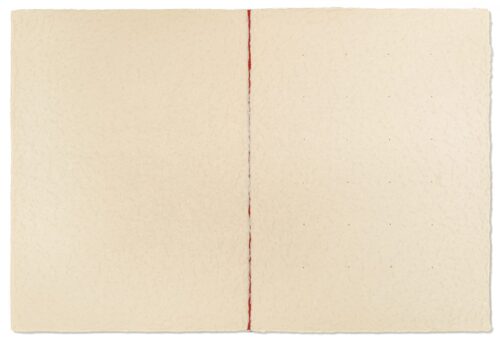
Harmony Hammond
But I think there are several counter intuitive aspects to what is a counter intuitive physics. One is that in some respects quantum physics is NOT inherently or obviously a step forward on the continuum of progress. But beyond that, the most insightful commentary I found is from three physicists: Caslav Brukner, Prof. Dr. Renato Renner and Prof. Dr. Eric Cavalcanti. And they conducted what is called The Wigner’s Friend experiment. (named after Eugene Wigner, a Hungarian physicist, who first conducted this thought experiment back in 1961 (!)). Now again, I can only sort of provide a very primitive lay version of these ideas. For quantum theory is always ALWAYS predicated on math. And things such as linear algebra, differential equations, and algebraic group theory — but there are things involved from which non math people can learn. And the real issue with the Wigner’s Friend idea is that it puts even the most basic objectivity in doubt. But again, I think we run directly into language issues.
First though, theatre is often used to explain Wigner’s Friend. That one can always add more ‘friends’ in the lab in this thought experiment. So, the place where the stage ends and the seats begin (sic) is unclear. You may think you are audience, but find that your actually on stage (so to speak). But never mind the epistemic aspect, or the ontic aspect, because what seems to matter is that there was an instinct with these physicists to employ a theatre metaphor. It is a first step toward my ideas about language and quantum physics. Yes, the stage and the off stage or seats can now be seen as a borderland region. What is being suggested is that consciousness, or rather a conscious subject, has to be involved in these equations. This is exactly where I start to think something is wrong. These physicists are both wed to very complex mathematics, and very stunningly simple minded narratives. It reminds me a tiny bit of the ‘performance artists’ who make videos and intentionally want to avoid anything like theatre or cabaret or vaudeville and instead just make very simple non performative videos (usually). Physicists call the imaginary humans in these thought experiments ‘Bob’ and ‘Alice’, etc. Wigner’s Friend is literally another guy who happens to maybe have seen the cat enter the lab. This is literally the way the experiment is described, it is the level of story involved. The point is that wave function collapse (superposition collapse) is tied to this Heisenberg principle about observers changing what is observed (it’s of course vastly more complicated because this is, uh, quantum theory)

Werner Heisenberg and Eugene Wigner, 1928.
Wigner was devoutly anti communist, as was his family, who fled the Bela Kun communist government for the period it was in power. So Wigner’s Friend was probably an agent provocateur who snuck into the lab. Ok, never mind. That was a quantum joke. The point is that Wigner conceived of this idea in the early 60s. And it was at that point, I think, that the narrative examples in these thought experiments took on qualities of Phillip K. Dick. Using ‘conscious’, the word, the way it is used in Wigner’s Friend (just as an example) is actually sort of amazingly simplistic if not just wrong and doesn’t it in fact somehow alter the meaning of the experiment? I am not sure at all why language and the aesthetics of story are not more important in all of this. Now you can google ‘Wigner’s Friend’ and wikipedia will give you a perfectly concise history and description of the paradoxical nature of this thought experiment.
These thought experiments are like Jim Carey’s martial artist from In Living Colour where to stop an actual knife attack he had to super carefully construct the exact way the attack would take place or his martial artistry would fail. The idea behind Wigner’s Friend is not real life. There could actually be no laboratory in existence that would be set up like this. But again, this is about the numbers. The math works. THIS is the paradox. The final point regards quantum is that there is (at least that I can find) almost no physicists who have any theory about or definition of ‘consciousness’. The three physicists who did the Wigner’s Friend experiment openly said they have no idea and wondered if there might not be a machine that can fulfil the role of observer. Or perhaps there were microscopic particles that filled that role. And this is where we return (thankfully) to philosophy. Quantum theory — exemplified perhaps by the Wigner’s Friend exercise is the endgame for the Standard Model of physics. And Schrödinger’s Cat is a play –a mystery at that. (Agatha Christie is a closed room mystery, Schrödinger’s play is a closed box mystery).

Anila Quayyum Agha
Remember that Josef Breuer’s early patient ‘Anna O’ described her habitual daydreaming as ‘my private theatre’.
“Capturing the observable patterns and regularities of the elements of reality, relative to each other, is an empirical and scientific question. But pondering about the fundamental nature of these elements is not; it is a philosophical question. The problem is that, in recent decades, scientists who have little or no understanding of philosophy have begun to believe that science alone can replace philosophy.”
Bernardo Kastrup (Ibid)
The extraordinary culture of late 19th century Vienna produced and initiated what is now called ‘modernism’.
“By 1900, Vienna was home to nearly two million people, many of whom had been attracted to the city because of its emphasis on intellectual excellence and cultural achievement. A remarkable number of them were pioneers in a broad range of modernist movements. In philosophy, the Vienna Circle, a group around Moritz Schlick that later included Rudolf Carnap, Herbert Feigl, Philipp Frank, Kurt Gödel, and most important, Ludwig Wittgenstein, introduced an attempt to codify all knowledge into a single standard language of science. The Vienna School of Economics was founded by Carl Menger, Eugen Böhm Bawerk, and Ludwig von Mises. The great composer Gustav Mahler prepared the transition from Haydn, Mozart, Beethoven, Schubert, and Brahms, the first Vienna school of music, to a new generation of composers led by Arnold Schönberg, Alban Berg, and Anton Webern, the second Vienna school of music. The architects Otto Wagner, Joseph Maria Olbrich, and Adolf Loos reacted to the magisterial public buildings on the Ringstrasse… { } Vienna had one of the most advanced infrastructures of any major city in Europe. The Wiener Werkstätte, or Vienna Workshop—the arts and design institute led by Josef Hoffmann and Koloman Moser—advanced the beauty of everyday life with elegant designs of jewelry, furniture, and other objects. In literature, Arthur Schnitzler and Hugo von Hofmannsthal formed Young Vienna, a modern school of fiction, drama, and poetry. Most important, as we shall see, a chain of scientists stretching from Carl von Rokitansky to Freud established a new, dynamic view of the human psyche that revolutionized thinking about the human mind. { } Freud’s theorizing, Schnitzler’s writings, and the paintings of Klimt, Schiele, and Kokoschka had a common insight into the nature of human instinctual life. During the period of 1890 to 1918, the insights of these five men into the irrationality of everyday life helped Vienna to become the center of modernist thought and culture. We still live in that culture today.”
Eric Kandel (The Age of Insight)
Well, we did still live in that culture. At least mostly until I would say around 1985. That marked, I think, something like the end of the that major and profound cultural shift that began in Vienna. Paul Robinson wrote, apropos of Freud and this intellectual climate in Vienna…. “to be always on the alert for the “real” (and presumably hidden) significance of our actions.” To look beneath the surface for the *real*. This impulse for the real beneath (sic) the fake and the phoney is an impulse that has largely left western society. And part of that is Quantum theory. Part of it is, also, traceable to Einstein and Bohrs.
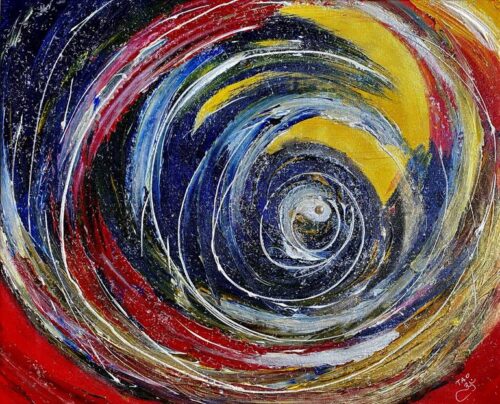
Tanja Olsson
This search for the hidden and buried, that which is not at first visible (!) is both (as noted above) Christian and a product of The Enlightenment. But this is too facile a statement, I think. Its not untrue, but the legacy of the Enlightenment was also one hostile to progress (per Adorno and Horkheimer). The seeds of barbarism (regression) were always there, much as National Socialism was a culmination of this regression, AND something that never actually went away. The search for understanding is always a search for home, but also for a kind of perfection. And that is enclosed within an idea of perfection.
“The tide had already begun to turn in the 1970s. The first hint that Freud’s reputation was in trouble came from the new feminists. The year 1970 itself was particularly rough, when, in separate books, Kate Millett, Germaine Greer, Shulamith Firestone, and Eva Figes all took Freud to task for his reactionary views on women. 1970 also witnessed the publication of Henri Ellenberger’s massive study The Discovery of the Unconscious, with its irreverent chapter on Freud; a few years later Paul Roazen’s Freud and His Followers continued in a similar vein. Ellenberger and Roazen were significant precursors of the more fullblooded criticism of the 1980s, but in retrospect they seem relatively mild and conventional. The past decade, by comparison, has brought an avalanche of antiFreudian writings, their tone ever more hostile. Undeniably, Freud’s reputation has undergone a sea change.”
Paul Robinson (Freud and his Critics)
I have noted the hostility to Freud numerous times in this blog. And its perfectly understandable. The Gramsci quote that is so popular these days is popular because it rings absolutely true. The Oedipal panic in western culture is visible on a daily basis, and the malaise of a dying culture is hard to bear. And I suspect the genocide in Gaza, perpetrated by a perverted sick and fanatical society of sadism and self loathing will in times to come serve as a clear demarcation signalling the end of all progress as western society has known it for several thousand years.
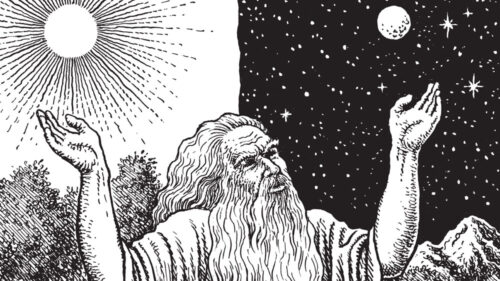
R. Crumb (Book of Genesis)
In the 50s and 60s the establishment intelligencia (Lionel Trilling to Auden to Phillip Rieff and a dozen others) were staunch Freudians. Paul Robinson catalogues the profound change in attitude toward psychoanalysis in general, and especially Freud that began in the early 80s. The completed turn toward hostility reached its apex by the late 80s. Robinson adds. “This brings me to my final thought about the significance of Freud’s fall from grace. I detect in it an underlying rejection of the modern, and in particular the modern conception of the self that Freud did so much to create. We might even characterize the reaction against Freud as postmodern if we agree to use that term analogously to the way it is used in architecture, where it denotes a rejection of the modernist aesthetic. In the intellectual and artistic realms, modernism entailed a loss of confidence in the stability and transparency of the self. It also entailed the recognition that all human knowledge is subjective and indeterminate. Freud’s theory of the unconscious, which denies that the self is aware even of its own ideas, was the most powerful articulation of this modernist sensibility.” (Paul Robinson IBID)
The rejection of Freud (and psychoanalysis) is a rejection of the modern (although those doing the rejecting would hardly see it this way. For them the *modern* is what THEY represent). The rise of scientism, the rise of positivism and bourgeois economic mythologies are all things hostile to Freud. They (those rejecting Freud, and psychoanalysis) are seen as ‘hard nosed realists’. This is also related to the hostility toward Marx. It is partly a rewriting of history in the latter’s case but it is also a rejection (and fear) of finding that hidden truth, that buried meaning. It is an insistence on the apparent, on the already revealed. The contemporary narrative society writes for itself is much closer to Homer than to the King James Bible (to borrow from Auerbach). But it is also an American led rejection of Freud. Americans see science and physics as realist enterprises.
I have heard physicists in several interviews refer to themselves as ‘just a hardnosed scientist’.
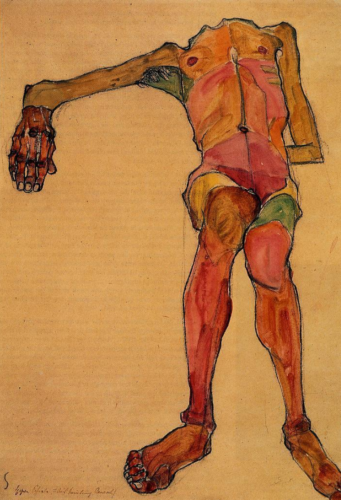
Egon Schiele
“Dutton argues that we evolved as natural storytellers because of the immense survival value of our fluent imaginative capacities. Storytelling is pleasurable, he explains, because it extends our experience by giving us opportunities to think hypothetically about the world and its problems. Representational visual art is a form of storytelling that artist and beholder alike can visualize and turn over in their own minds, examining relations between characters acting in different social and environmental settings. Storytelling and representational visual art are low-risk, imaginary ways of solving problems.”
Eric Kandel (Ibid)
This is TED talk territory. Superficial and facile, and most importantly non threatening. And its utter junk in the same way 99% of AI research is essentially junk, and its an absolute (but debilitating) dead end.
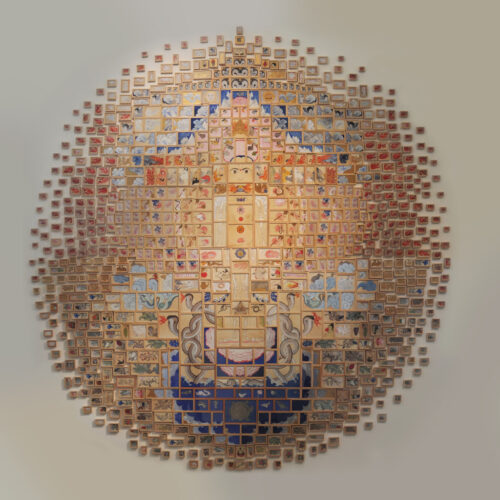
Manjunath Kamath – Vishwaroopa
Now I wrote about closely related topics back in 2021…. https://john-steppling.com/2021/11/doomed-to-succeed-or-downsizing-subjectivity/
And I will pull a quote I used in that article:
“Śaṅkara repeatedly discusses the reasons why other means are inapplicable. He comments often on the limits of sense perception in relation to knowing brahman. Each sense organ is naturally capable of revealing a quality that is appropriate to its own nature.Sound,sensation, form,taste and scent are their respective spheres of functioning. Brahman, however, remains unknowable through any of these because of its uniqueness. Brahman is without sound, touch, form, taste, or smell and is therefore outside the domain of these sense organs. Kaṭha Upaniṣad 1.3.15 speaks of brahman as “that which is soundless, touchless, colorless, undiminishing, and also tasteless, eternal, odorless, without beginning, and without end, greater than the greatest, and ever constant.” Brahman is limitless, while to become an object of sense knowledge is to be finite and delimited, to be one object among other objects. A brahman that is appre- hended through the senses is, from the Advaita viewpoint, a contradiction. In his commentary on Bhagavadgītā 13:12, for example, Ṡaṅkara rejects the claim that there is a contradiction in the denial of brahman as both sat (existent) and asat (non-existent) by interpreting these terms to signify the non-availability of brahman as an object of sense knowledge.”
Anantanand Rambachan (That From Which All Words Return”: The Distinctive Methods of Language Utilization in Advaita Vedānta)
This is to point up the well known and well trod path of comparing Eastern mysticism with quantum theory. I will leave this here but I think that old blog post is actually pretty cogent for today.
My point here is more about the shaping of western society. And how capitalism developed in ways that encouraged discoveries like quantum mechanics. Or perhaps what I am saying is that the evolution of neo-Libralism manufactured cultural pre-conditions for quantum theory, and for AI. That science is not value free or neutral, and that the hostility to the humanities and to Marx and Freud is inextricably tied into the overwhelming dominance of both computer sciences AND quantum theory. Both were cause and both were effect (in true quantum style).

Esther Teichmann, photography
Another theatre metaphor that gained some prominence was Bernard Baars, in 1998…
“The Global Workspace Theory has three parts, which Baars describes metaphorically in terms of the theater: a bright spotlight of attention focused on the action of the moment; an unseen cast and crew who are not part of the immediate action; and the audience. The metaphor represents mind—both its conscious and unconscious functions. Mind is not simply the actors, crew members, or audience, but the network of interactions among the three.”
Eric Kandel (Ibid)
This is really pretty Jr High level, but it does indicate again how deeply the unconscious (and conscious) mind ‘is’ theatre. The scene of the crime. Freudian anthropology, which is really philosophy, is so often what is missing from contemporary critiques. The forgotten violence, jealousy and compulsion of our reality/subjectivity.
I want to suggest that this desire for goals, for solutions, is what finally must be overcome. But there are enormous obstacles to such a project. There are several thousand years of searching for solutions, and for, ‘objectivity’. I think the emergence of quantum theory (and its later incarnations and variants) was the start of a massive correction or neutralization of this desire. Science has scrubbed itself clean of humanity’s dark soul, abjection, and the stark terrors of the Id.
“the role of the observer remains as mysterious as ever, and the demarcation between the system of measurement—which is widely viewed as a classical system—and the quantum system being measured is simply accepted as a given. The role of the subject remains outside contemporary physics, as it was fifty years ago…”
B. Alan Wallace (Hidden Dimensions)

Mose Tolliver
The observer, that which forecloses wave function, kills the cat, and cannot be reduced to brain (regardless of Ramachandran et al). This is the so called ‘Hard Question’ (Chalmers). It is why any discussion of AI becoming sentient is just silly (or propaganda). And the observer is a language using entity, a consciousness of words and grammar. Physicists cannot, I guess, be expected to narrate wave function collapse as if it were a Kafka parable, or a forgotten book of the Old Testament, but that IS what such quantum events imply — at least to me.
“Words like ‘truth’, ‘sense’, ‘reality’ have a peculiar fascination. The philosopher would like to penetrate to the deeper meaning which he dimly feels to lie behind these words. For this purpose he asks: What is the essence of truth? What is the essence of the real? We are no longer tempted to give answers to these questions. But what underlies this obscure search? What force imposes these questions on us? We arrive here at an important point, but one very difficult to clear up.”
Ludwig Wittgenstein (Waismann, The Voices of Wittgenstein. The Vienna Circle, edited by Gordon Baker)
To donate to this blog use the paypal button at the top of the page. Donations also help keep the Aesthetic Resistance podcasts up and going.

Speak Your Mind